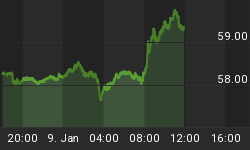The little state-island might be safe, but faith in the Eurozone is decreasing. In the United States, the economic momentum remains and stocks are testing all-time highs. EUR/USD is still in a tight range.
A dangerous precedent
The troika (EU, ECB, and IMF) and the Cypriot government found a compromise on the bail-out agreement. The private sector contribution will come from depositors of the two largest banks with accounts above 100,000 euros. A limit on withdrawals has been set to prevent the flight of capital from the island state. Russia will provide little or no help. As a result of the bail out, the euro will be under pressure for a few more months despite targeting 1.31/1.32 in the short-term. Last week, the president of the Eurogroup, Jeroen DijsselbIoem, anticipated that the Cypriote case would be the model for future bail-outs in the Eurozone. This will not serve the European cause well, considering that economic conditions appear to be deteriorating.
In fact, the latest Organization for Economic Cooperation and Development (OECD) report confirmed the huge discrepancies within the Eurozone. On the one hand, Germany has strong growth, 2.3% quarter-on-quarter annualized for the first part of 2013; on the other, the other European countries are struggling. In France, for example, the gross domestic product (GDP) will be flat, while in Italy it will remain below zero. Overall, the long-term unemployment rate is increasing and citizens are dissatisfied with the outcomes of the austerity measures. In addition, populist coalitions are beginning to emerge and propaganda against the Eurozone, Germany and old political practices is succeeding in increasing the number of malcontent voters. Although the "old continent" is divided, the consequences are unpredictable. In Italy, the Mr. Grillo's Cinque Stelle movement opposes the formation of a government. Economic growth is needed but is difficult to find at the moment in Europe.
Is devaluation the key?
Emerging nations can offer limited opportunities to balance shrinking demand from the so-called developed nations. A devaluation of national currencies would help; the United States has been doing it for some time. Japan has just started to devaluate the Japanese yen, and Europe will eventually devaluate the euro. In effect, the increase of the EUR/USD exchange rate can last for a few more years only. Let's see why. Since 1972, the EUR/USD (Deutsche Mark) rate has topped in 1980 and in 1995 (15 years time span). From bottom to top, the uptrend lasted for 10 years (1985-1995). Bull trends extended for 45%/58%, top/bottom. The current bull market left the bottom in 2002 at about 0.85 and already topped at 1.59 in 2008. Another move up would probably mark the end of this long-term bull cycle for the EUR/USD rate.
A credible program to reduce the deficit could support the US dollar in a new bull-trend, which could last from five to seven years. Mr. Bernanke said that economic strength at home should spill over to other nations. The Federal Reserve will reduce quantitative easing 3 (QE3) when the unemployment rate manifests a sustained decline. A strong economic momentum is essential for a stable labor market. In February durable goods orders rose almost 6.0%, supported mainly by the civilian aircraft industry, which showed an increase of 95.3% in new orders. The GDP is expected to rise above 2.5% in 2013 and to continue expanding in 2014. Consequently, the Federal Reserve could begin to unfold the asset purchases program by the end of this year and close it completely by 2015.
















